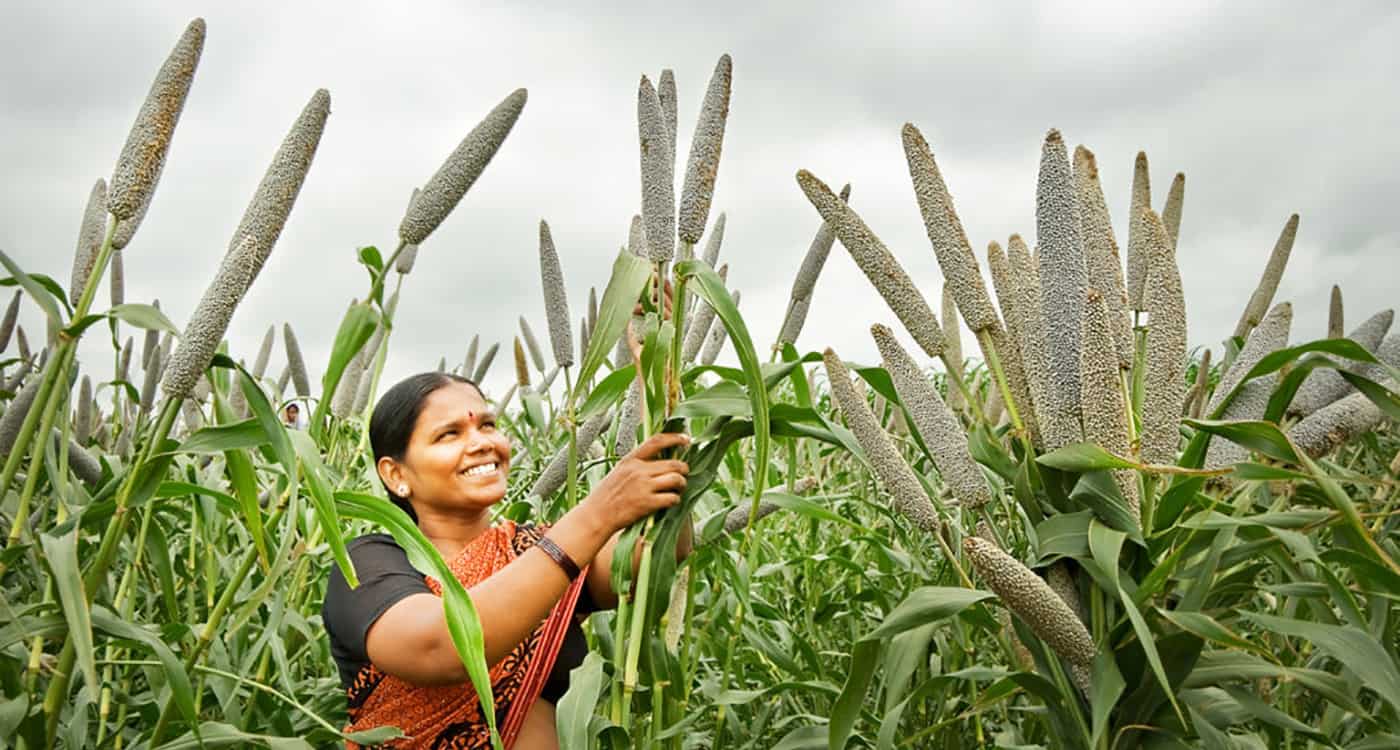
Common Name- Bajra
Family- Gramineae
Botanical Name- Pennisetum glaucum
Introduction
• Bajra is popularly known as “pearl millet”.
• It was originated from India and Africa.
• It is largely grown in India in an area of 10m.ha, with production of 7.9 million tones with productivity of 791 kg/ha.
• It is a coarse grain crop and is considered as the staple food crop of almost 100 million people in rural areas. It is also used as fodder in Asia and Africa.
• It is rich in Protein (12.6%), Fiber (1.2%), Fat (5%), Carbohydrate (60-70%).
Location
• The major producing state is Rajasthan followed by Maharashtra, Haryana, Gujarat and Uttar Pradesh.
• The highest yielding state is Tamil Nadu.
Local Names
It is often known by different names in different languages like Pearl Millet (English), Bajra (Hindi, Urdu, Punjabi), Sajje (Kannada), Kambu (Tamil), Kambam (Malyalam), Sajjalu (Telugu), Bajri (Rajasthan, Gujarati, Marathi).
Health Benefits
• Bajra is a good source of energy and good for heart health.
• Bajra helps in reducing weight and digestion disorders.
• Bajra is good for diabetics as it controls blood sugar and it may help in preventing cancer.
Season
• It is grown during summer season in the month of February-May in parts of Rajasthan, Uttar Pradesh and Gujarat.
• It is also grown post rainy season also known as Rabi season in the month of November-February at a small scale in Gujarat and Maharashtra.
Climate
• It grows best in warm and dry conditions.
• It is a drought tolerant crop which requires low annual rainfall of 40cm-60cm.

Female farmer smiling looking at her bajra produce
• Optimum temperature for its cultivation is 20°c-30°c.
• During its vegetable growth, moist weather is very beneficial.
• Bajra is grown as Kharif crop in North India and in southern parts it is known as Summer crop under irrigation.
Soil Requirement
• It is grown in wide variety of soil.
• It grows best in black cotton soil, sandy loam soil which has good drainage system.
• Acidic and water logging soil is not preferred.
• For its cultivation, avoid saturated soil.
• The crop grows well in soil with low pH range.
• It is sensitive to acidic soil.
Land Preperation
• The field should be finely tilled by 2-3 harrowing followed by a plowing.
• Weeds should be destroyed if any during the land preparation.
Sowing Time
In India, it is grown in three seasons
1. Kharif- June-October(rainfed)
2. Winter- November-February(rainfed)
3. Summer- March-June
• It is grown in Tamil Nadu, Karnataka, Punjab and Gujarat during summer as an irrigated crop.
• Sowing should be done with onset of monsoon i.e. first fortnight of July in North and central parts of the country.
• To obtain higher production of summer pearl, it should be sown in the last week of January to 1st week of February.
• For rabi season, first fortnight of October is appropriate in Tamil Nadu.
• The optimum time to sow Bajra is middle to last week of July.
Seed Rate
• For dibbling method seed rate should be 3-3.5kg/ha.
• For drilling method seed rate should be 4-5kg/ha.
Spacing
• Row spacing of 40-45cm should be maintained.
• Plant to Plant spacing of 10-12cm should be maintained.
• Depth should be 2-3 cm.

Irrigation
• It is a highly drought tolerant crop and water requirement is 300-350mm.
• Irrigation at available soil moisture of 50% or ideal IW/CPE ratio 0.4 is sufficient.
• Tillering and flowering are critical stages.
• For panicle initiation three irrigations can be recommended, flag leaf and flowering in addition to sowing irrigation under limited moisture conditions.
• Normally 5 irrigations are recommended.
• Summer irrigated pearl millet requires 6 irrigations for high yields.
Manures & Fertlizers
• If one is cultivating commercial hybrid Bajra, even Bajra needs few nutrients.
• Application of 10-15 tonnes of compost or farm yard manure per hectare is required for requirement of fertilizer of local varieties of Pearl millet.
• For maximum profit on the basis of soil test value, fertilizer should be given.
• Almost 3-5cm below the seed, half dose of nitrogen and full doses of phosphorus and potassium should be applied.
• Foliar spray of 3% urea is also recommended in barani conditions.
Harvesting
• When grains become hardy and also contain moisture, the crop is ready to harvest.
• Cutting earhead or cutting entire plants by sticks are 2 methods that can be followed in harvesting.
• For 4-5 days in the sun stalk the cut plants for drying grains.
• By beating the earheads, grains can be separated.
Yield
• Grain-23-35 qtl/ha, Fodder-100-120 qtl/ha, Under Irrigated condition.
• Grain-12-15 qtl/ha, Fodder-70-75 qtl/ha, Under rainfed condition.










